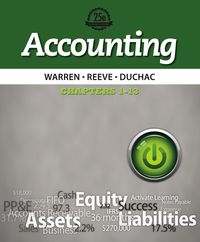

i - X Data Table Absorption Costing 2016 2017 2018 Sales (units) 19,000 19,000 22,800 Revenues $ 1,596,000 $ 1,596,000 $ 1,915,200 Cost of goods sold Beginning inventory 0 0 292,600 Production 1,463,000 1,755,600 1,463,000 Available for sale 1,463,000 1,755,600 1,755,600 Deduct ending inventory 0 (292,600) 0 0 Adjustment for production-volume variance (254,600) 0 Cost of goods sold 1,463,000 1,208,400 1,755,600 Gross margin 133,000 387,600 159,600 Selling and administrative expenses (all fixed) 133,000 133,000 133,000 $ 0 $ Operating income 254,600 26,600 Beginning inventory 0 0 3,800 Production (units) 19,000 22,800 19,000 Sales (units) 19,000 19,000 22,800 Ending inventory 0 3,800 0 Variable manufacturing cost per unit $ 10 $ 10 $ 10 Fixed manufacturing overhead costs $ 1,273,000 $ 1,273,000 $ 1,273,000 Fixed manuf. costs allocated per unit produced $ 67 $ 67 $ 67 Print Done E9-28 (similar to) Question Help Honeyland uses standard costing to produce a particularly popular type of candy. Honeyland's President, Jeff Tarver was unhappy after reviewing the income statements for the first three years of business. He said, "I was told by our accountantsand in fact, I have memorizedthat our breakeven volume is 19,000 units. I was happy that we reached that sales goal in each of our first two years. But, here's the strange thing: In our first year, we sold 19,000 units and indeed we broke even. Then, in our second year we sold the same volume and had a signficant, positive operating income. I didn't complain, of course. but here's the bad part. In our third year, we sold 20% more candy, but our operating income dropped by nearly 90% from what was in the second year! We didn't change our selling price or cost structure over the past three years and have no price, efficiency, or spending variances so what's going on?!" (Click the icon to view the absorption costing income statements for the three years.) Read the requirements Requirement 1. What denominator level is Honeyland using to allocate fixed manufacturing costs to the candy? How is Honeyland disposing of any favorable or unfavorable production-volume variance at the end of the year? Explain your answer briefly The denominator level used to allocate fixed manufacturing costs is units








